Nokia N8 camera-phone review
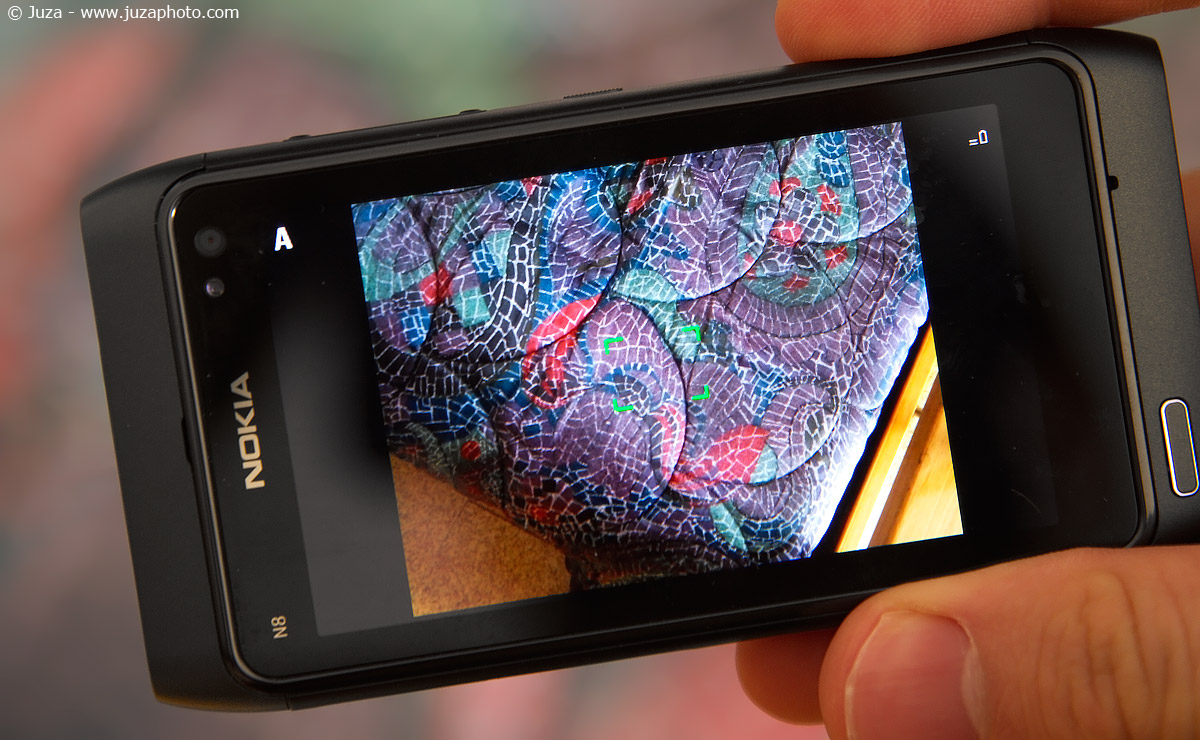
As you likely know, I have always been fascinated by camera phones, and until now I have used the 12-megapixel Samsung M8910 (currently discontinued). It turned out to be very useful both for snapshots and for situations where I have left the reflex at home, to shoot from the plane, or for creative photos that take advantage of the wide angle lens and its great depth of field. One week ago, I have got the new "king" in the camera phone arena: the Nokia N8. This smartphone has the largest sensor ever used in a phone (1/1.8"), that is actually bigger than the sensor of most compact cameras...for comparison, the Canon G12 sensor is just a little bigger (1/1.7"), while the sensor of the Canon SX30IS or Nikon S9100 measures just 1/2.3". In other words, the Nokia N8 camera-phone has larger pixel, and likely better image quality, than many dedicated cameras!
In this review, I have done an in depth analysis of its photo and video capabilities and I have compared it with the Samsung M8910. I remind you that you can see a comparison between the Samsung and the Canon 350D in the previous
Samsung M8910 camera phone review!
Camera specifications (compared with my previous Samsung M8910)
����| � | � �FOTO | � � |
�
| � | � �Nokia N8 | � �Samsung M8910 |
�
| �Resolution | � �12 megapixels (4000 x 3000 px) | � �12 megapixels (4000 x 3000 px) |
�
| �Sensor size | � �8.7x6.9 millimeters (1/1.86") | � �5.4x4.0 millimeters (1/2.5") |
�
| �File format | � �JPEG | � �JPEG |
�
| �Aspect ratio | � �4:3 | � �4:3 |
�
| �Manual ISO | � �yes, from 100 to 800 | � �yes, from 50 to 1600 |
�
| �Auto ISO | � �yes | � �yes |
�
| �Shutter speeds | � �from 1/5 to 1/376 | � �from 1" to 1/1000 |
�
| �Exposure meter | � �center weighted | � �center weighted, matrix, spot |
�
| �Exposure compensation | � �+2/-2 EV in 0.5 EV steps | � �+2/-2 EV in 0.5 EV steps |
�
| �White balance | � �Auto, Sunny, Incandescent, Fluorescent, Cloudy | � �Auto, Sunny, Incandescent, Fluorescent, Cloudy |
�
| �Autofocus | � �yes | � �yes |
�
| �Lens | � �Zeiss 6.0mm f/2.8 | � �Samsung 4.6mm f/2.6 |
�
| �35mm focal length equiv. | � �28mm | � �28mm |
�
| �Apertures | � �f/2.8 | � �f/2.6, f/3.6 |
�
| �Image stabiliztion | � �no | � �no |
�
| �Min. focus distance | � �10 cm | � �10 cm |
�
| �Flash | � �yes, xenon | � �yes, xenon� |
�
����| � | � �VIDEO | � � |
�
| � | � �Nokia N8 | � �Samsung M8910 |
�
| �Resolution | � �1280 x 720px | � �720 x 480px |
�
| �Frame rate | � �25 FPS | � �30 FPS |
�
| �Frame rate | � �MP4 | � �MP4 |
�
| �Bit rate | � �1.5 MB/s | � �? |
�
| �Autofocus | � �no | � �yes |
�
| �Light | � �no | � �yes� |
�
Image quality: photo (in comparison with Samsung M8910)
I have compared the Nokia N8 side by side with the Samsung M8910. There is an important difference with the review of the M8910 that I did last year: while in the previous review I used the phones in manual settings, to get the very best image quality, this time I have taken all the photos in auto mode. The reason is that during this year of shooting with the M8910, I have noticed that when I use the camera-phone I never spend time to adjust the various setting, so for me it is more important to see the results without any particular adjustment.
Both phones have a 12 megapixels sensor and 28mm equivalent lens, but the Samsung sensor is 1/2.5", while the Nokia has a much larger 1/1.8" sensor. Other that that, the Samsung is two years older, and in the meantime the technology has improved: let's see how they compare. I highly recommend to download the full size photos, the differences between the cameras are much bigger than what it seems from the 100% crops!
Bright light:
����| �Full photo Nokia N8 download | � �crop 100%, Nokia N8 |
�
�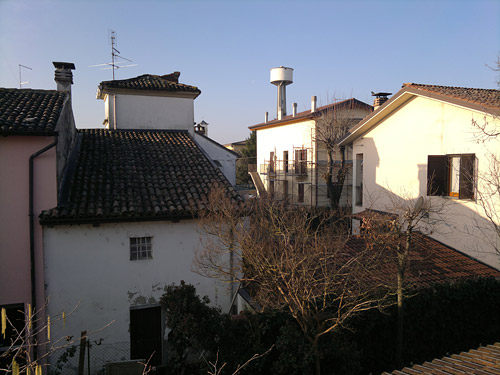 | � �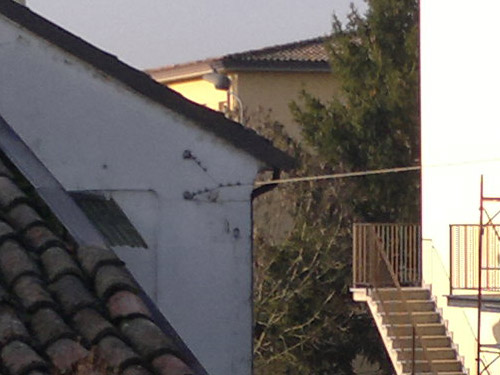 | �
�
����| �Full photo, Samsung M8910 download | � �100% crop, Samsung M8910 |
�
�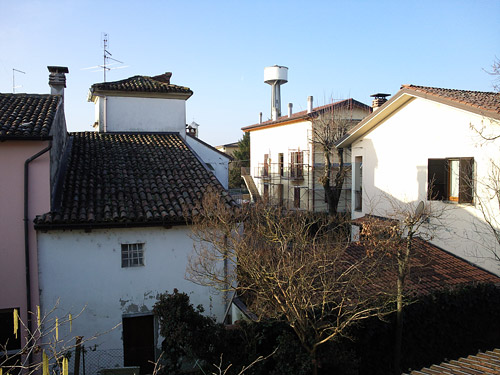 | � �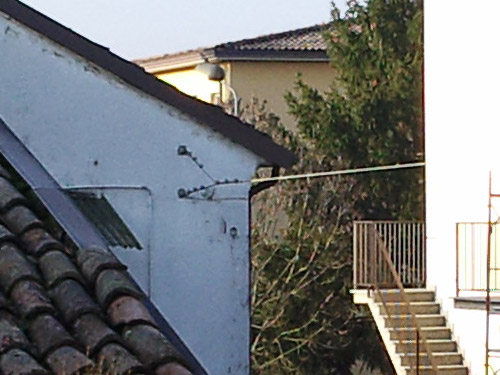 | �
�
In daylight, both phones are excellent; the amount of captured detail is about the same, even though the Nokia has clearly more dynamic range. There is, however, a big difference in the post-processing done by the phone: the Samsung use a more aggressive noise reduction and a lot more sharpening, that result in a punchier, but less natural-looking, image. Personally, I prefer the approach of the Nokia N8, that overall gives a more natural photo, with less sharpening artifacts.
Talking about the settings chosen by the phones, the Nokia has uses a shutter speed of 1/130 f/2.8 ISO 100, while the Samsung has used 1/360 f/2.6 ISO 50. The reason for this apparent contradiction (in theory the Nokia at ISO 100 should have used 1/720) is that the Nokia has a mechanical shutter so it can not use extremely fast shutter speed: the fix this problem, the phone has a ND filter that is automatically activated when necessary, to reduce the shutter speed in case of very bright light.
Low light, no flash:
����| �Full photo, Nokia N8 download | � �100% crop, Nokia N8 |
�
�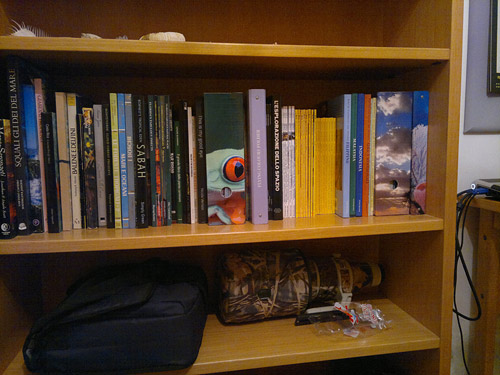 | � �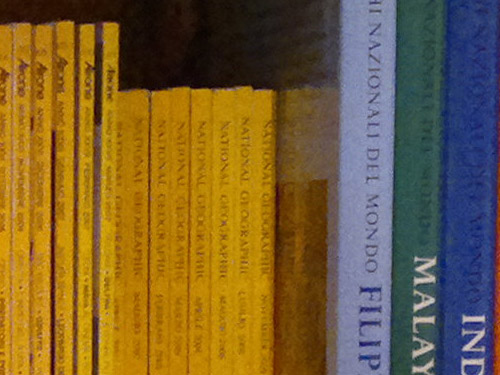 | �
�
����| �Full photo, Samsung M8910 download | � �100% crop, Samsung M8910 |
�
�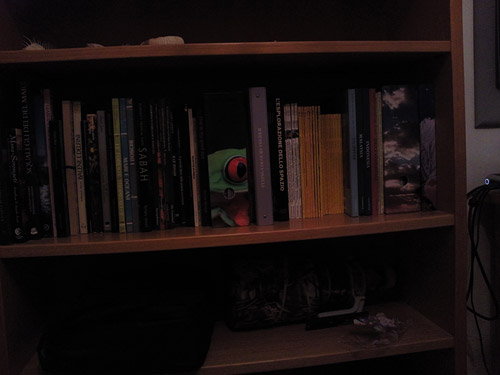 | � �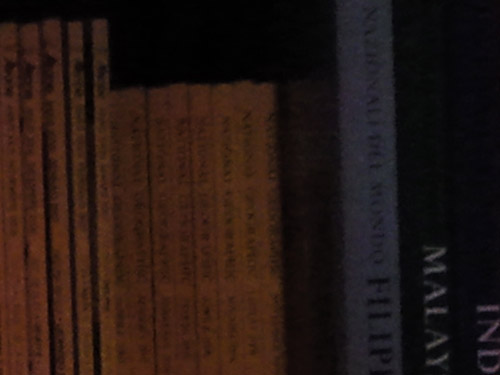 | �
�
In low light, the N8 is the king, thanks to its larger sensor and better exposure meter. With the default settings, the Samsung has a strong tendency to underexpose to "hide" the noise, and you need to overcompensate on +1 or + 2 to get a correctly exposed photo. Other than that, the Nokia N8 shows much better colors and a lot more detail; I'd say that the N8 has at least two stops of advantage in terms of high ISO.
It is important to note that the Nokia uses slower shutter speeds; in this test, the Nokia has used 1/8 f/2.8 ISO 580, while the Samsung has used 1/15 f/2.6 ISO 250. If both phones had used 1/15, the advantage of the Nokia would be one stop less, even though it is still better than the Samsung.
Low light, with flash:
����| �Full photo, Nokia N8 download | � �100% crop, Nokia N8 |
�
�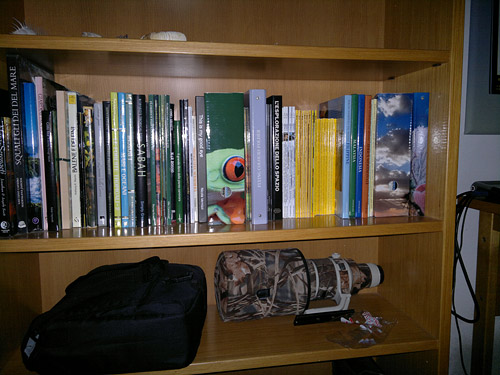 | � �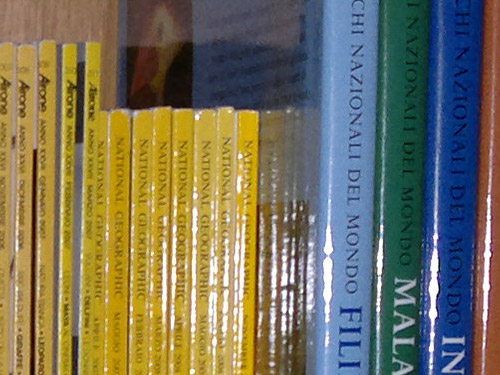 | �
�
����| �Full photo, Samsung M8910 download | � �100% crop, Samsung M8910 |
�
�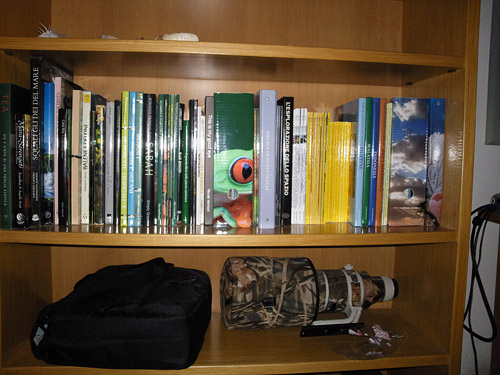 | � �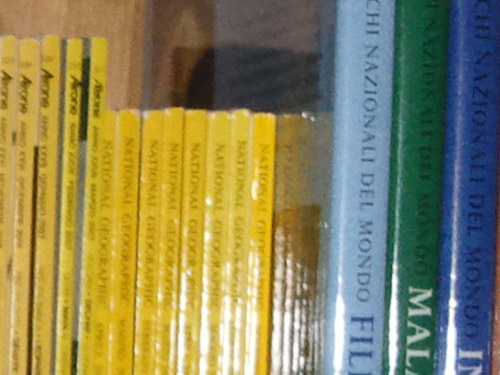 | �
�
The Nokia N8 has a xenon flash, as the M8910, but the unit of the N8 is less powerful. Overall, when using flash as main light the Samsung gives slightly better exposure and colors; the white balance of the Nokia leaves a slight blue cast. On the other hand, the Nokia gives a much sharper image thanks to the less aggressive noise reduction. Here both phones have used a shutter speed of 1/33, and a sensitivity of ISO 160 (Samsung) and ISO 200 (Nokia N8).
Macro:
����| �Full photo, Nokia N8 download | � �100% crop, Nokia N8 |
�
�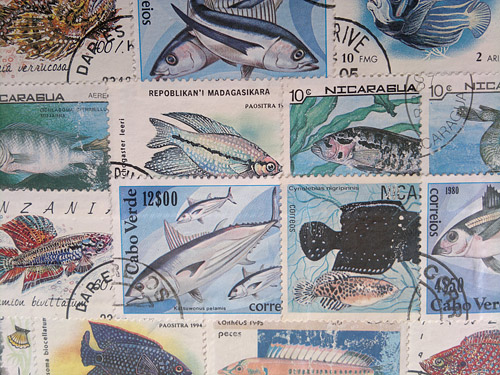 | � �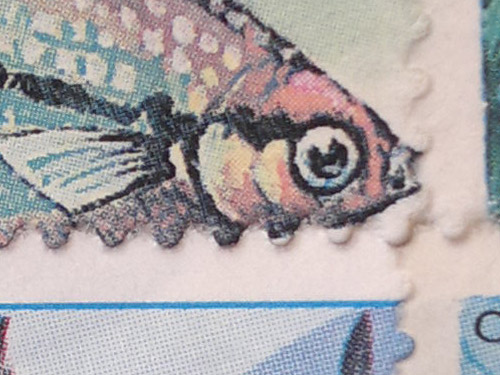 | �
�
����| �Full photo, Samsung M8910 download | � �100% crop, Samsung M8910 |
�
�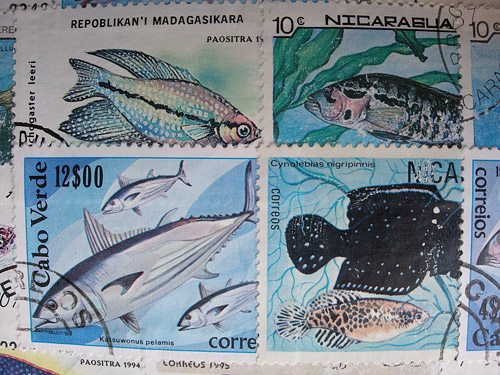 | � �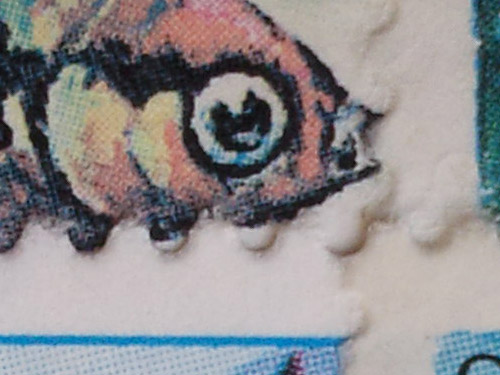 | �
�
In macro mode, the Nokia N8 gives a more natural-looking image and a lot less distortion, but the Samsung has a much better macro ratio and its punchier colors works well here. In this area, I prefer the results given by the M8910.
Image quality: video (in comparison with Samsung M8910)
The N8 has 720p HD video at 25 FPS; it is not the best on the market in terms of video (there are other phones capable of 1080p full HD video), but it looks pretty good on paper and it is a lot more resolution than my previous M8910. Let's see how they compare!
Daylight:
Still frame from video, Samsung M8910
In daylight, both phones have low noise and good color rendition, even though the Nokia has a more natural look and less compression artifacts. Thanks to its HD resolution, the N8 shows a lot more detail than the Samsung; moreover, the Nokia has always more dynamic range...if you look to the highlights, the difference is pretty noticeable.
Low light:
Still frame from video, Samsung M8910
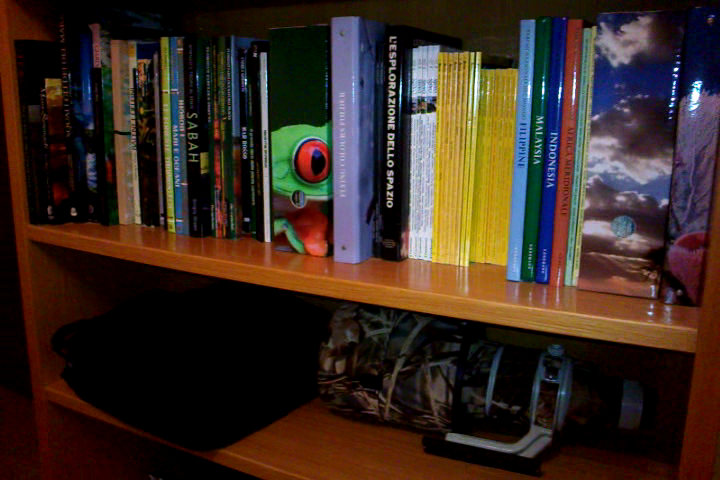
Still frame from video, Samsung M8910 with video light
In low light, the N8 is the king both for its higher resolution and for its much lower noise; the Samsung has worse performance even with the video light turned on (the Nokia lacks of video light). The only situation where the Samsung would win is in total absence of light with close subjects; in this case, it would be able to get something thanks to its video light, while the Nokia would not be able to record useful video.
An important difference between the two phones is that the Nokia has fixed focus during video (everything from 60cm to infinity is in focus, but you can't focus close), while the Samsung has autofocus even during video mode. Actually, the Nokia choice is much better. Even though it makes impossible to take macro videos, it works better in everyday situation, and in low light there is no contest: the Samsung keep hunting back and forth for focus, making the video unusable, while with the Nokia you always have the scene in focus.
Conclusions
My previous Samsung M8910 had very good image quality for a camera phone, and the Nokia N8 is even better in nearly every respect. It has lower noise, more natural colors and less artifacts - its image quality can be compared to a dedicated compact camera. The high ISO improvement is really welcome and it helps a lot in low light situations, even though the tendency to select an excessively slow shutter speed may result in blurred photos: if you don't have a support, it is better to raise the sensitivity on "medium" (400) or "high" (800). An interesting support alternative is the
Gorilla Pod Mobile, a super small tripod thought for mobile phones.
Two things I'd like to see improved in future models are image ratio and range of shutter speeds. I really don't like the 4:3 ratio, and I end up cropping the majority of the photos, so I'd prefer a sensor that has a native aspect ratio of 3:2. Other than that, the N8 lacks of real slow shutter speed. Even in the darkness, its slowest shutter speed is limited to 1/5, while other phones, as the Samsung M8910, reach 1" of exposure. If you are taking photos of a stationary subject and you have a support, a slow shutter speed is welcome.
The Zeiss 6mm f/2.8 lens is very sharp: nowadays many compact cameras have exaggerate 20x or 30x zooms that offer average image quality, and the prime lens used on the N8 is actually better than many of these zooms. A moderate optical zoom, 2x or 3x, would be really welcome, but nowadays it seems to be impossible without sacrificing small size and weight. But the thing that I really, really miss is the lens cover: unlike some old models, the N8 has not any protective cover for the lens, so there is always the risk to scratch the front element.
Video quality is great; of course full HD would have been nice, but even 720p offers a lot of detail, and videos are smooth. The fixed focus helps a lot in low light situations, where AF would go crazy, and the good high ISO capabilities allows to get good videos even in low light. Another very nice feature is the optical zoom during video mode: instead of using the classic digital zoom, during video the N8 takes advantage of the high resolution sensor, and when you zoom it uses a smaller portion of the sensor, instead of resizing the output of the whole sensor. This method is comparable to optical lens zoom, and indeed in video mode the image is very sharp even at full 3x zoom.
The phone itself is pretty good; its operative system is not as good as Apple iOS or Google Android, but it is not bad, if you don't need many applications. The user interface is snappy and intuitive; overall, I recommend the N8 to all those looking for the best camera-phone on the market!


















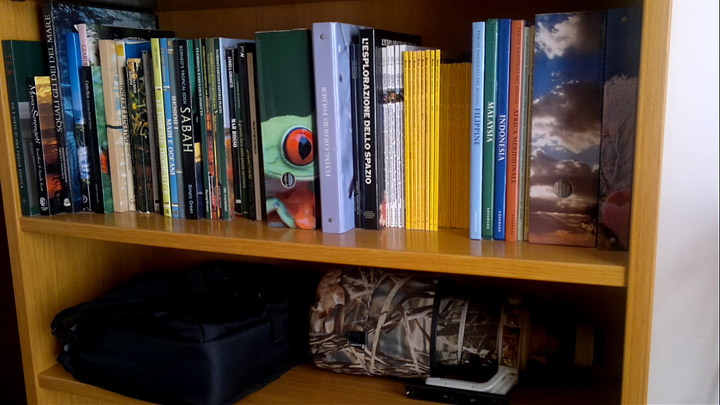
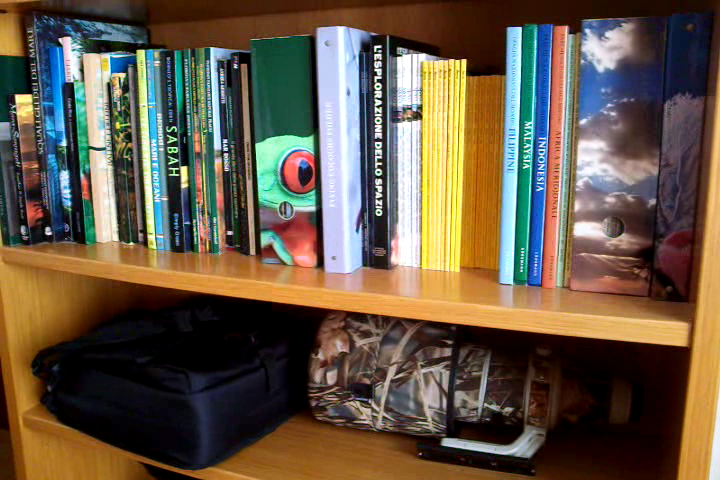
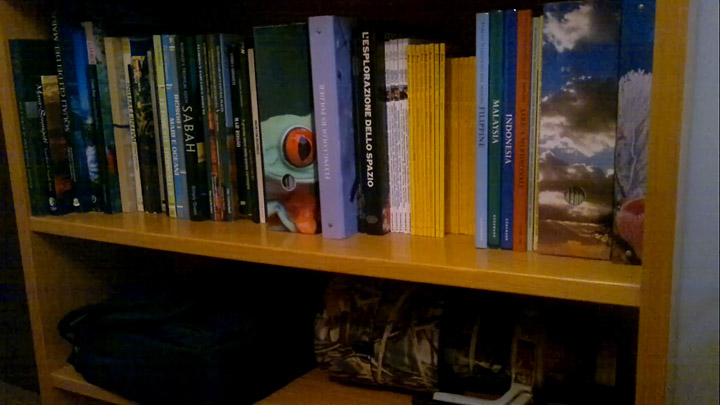
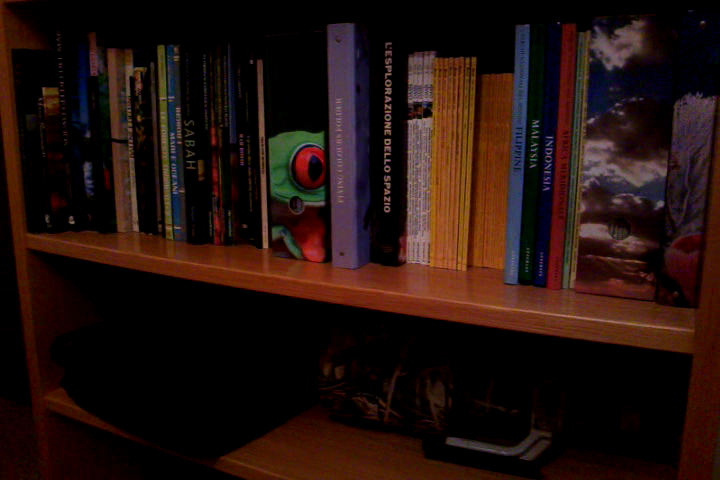

 JuzaPhoto contains affiliate links from Amazon and Ebay and JuzaPhoto earn a commission in case of purchase through affiliate links.
JuzaPhoto contains affiliate links from Amazon and Ebay and JuzaPhoto earn a commission in case of purchase through affiliate links.